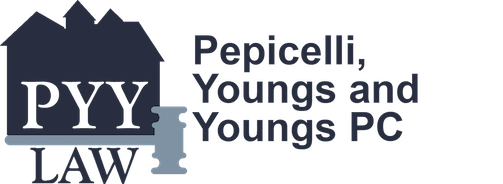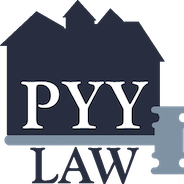All Trusts Require Frequent Review and Updates

Most estate plans include a trust in one form or another. The purposes and uses of trusts may vary widely, but all trusts should be reviewed frequently and updated.
A testamentary trust is written within a will and does not take effect until death. A revocable living trust, sometimes called “inter vivos” meaning created during life, is a separate document. Both types of trusts are revocable and can be amended or restated by the owner.
Changes in family circumstances and changes in the law are constantly happening and can have drastic impact on the terms and effectiveness of a trust. It is vitally important to review
your estate plan often and to seek advice on changes in the law. The following are suggested areas of review:
Why did you create the trust provision in the first place?
If you set up the trust to provide for your minor children and to see that they have money for education, are they now grown and finished with schooling? Perhaps you desired the trust to protect a child who was a wild teenager at the time, spending crazily and making bad decisions; is that child now mature and wise enough to receive money outright? Or perhaps the child is still wild and you may need to increase the length of the trust and age of distribution. Maybe the trust was created only to take advantage of estate tax savings; the federal estate tax laws have changed frequently and drastically in the past five years. If the reason for the trust has changed or no longer exists, changes are needed.
Are there new reasons to address in the trust?
When you first executed the trust or will, perhaps your children were young and had yet to go to college. If they are now grown and have children of their own, you need to provide in the trust for young grandchildren and their education, especially if a child of yours were to die with young children. Or perhaps a child of yours was small at the beginning of the trust, and although she is now a grown-up, she has developed problems which call for a trust to continue far beyond the originally stated age. Examples may include poor money management, a bad marriage partner, drug and/or alcohol addiction, or mental illness. A child’s medical diagnosis with an on-going chronic condition, either mental or physical, calls for a very specific type of trust called a Supplemental Needs Trust, to protect eligibility for Medicaid and supporting benefits. If you now are aware of such changes, you should seek legal advice to modify your will and/or trust immediately.
How long ago did you last consult an estate planning attorney for review of your documents?
If the answer is five years or more ago, you need to make an appointment for review and updating.
Do you have a substantial retirement plan, IRA, and/or large life insurance policies?
These types of assets are subject to stringent tax laws and are governed by the designation of beneficiaries. These assets may not become a part of any trust unless they are specifically designated, and great care is needed to avoid taxes and/or an unintended result.
Retirement Accounts
When you started that job and filled out the plan forms, or opened that IRA, you may have simply named your spouse. Now the value has grown quite large. If your spouse is still living and is still your spouse, it is good to have that spouse as first beneficiary. However, if your spouse is not living, if you have divorced and possibly remarried, or if you and your spouse die together, the secondary or contingent beneficiaries will become the owner. If you did not name any secondary beneficiary, the plan or IRA may pay to your estate, but this will cause immediate income taxation that could have been deferred. If your plan names a first or a second beneficiary who is a minor, now disabled, or now deceased, then you need to file new forms with the company that administers the plan or IRA, designating new choices. This area is very complex and errors can be very costly, so you should seek legal advice first. If you wish a retirement asset to be held in trust, the trust must have very specific terms, or there may be severe tax consequences.
Life Insurance
We frequently see policies which name long-deceased beneficiaries or which name small children as beneficiary. These are dangerous mistakes. If a policy has no living beneficiary, it will default according to the terms of the contract. Often, this means it pays to the owner’s estate. Many of these policies have been bought many years ago; when a young worker began his career, he often named his parents as beneficiaries. Thirty or forty years later, the parents are deceased. Or he may have named a first wife, long divorced or deceased. Often these policies pass to the estate, but then are subject to creditor claims. A policy named to wife and then children is also a common occurrence. But if the policy insured dies at a time when the children are under 18, they cannot receive it outright and costly court action may be necessary. Or the child may be 19 or 20 and receive a large sum of insurance money outright, when it would have been better to hold it in a trust for education.In order to avoid the unfortunate problems above, you should review your beneficiary designations every two years, and seek experienced legal advice to be sure your intentions are carried out.
Who are the Trustees?
If your trust provisions are more than five years old or if you have named individual trustees, you should reconsider. If a trustee is now deceased, is older than you are, or has changed so that you no longer feel that person is a good choice, changes are needed immediately. There should always be a first trustee and at least one successor. A person who was a dear friend before may have moved away, lost touch, or shown himself to be unreliable. A person your age or older cannot be expected to survive until your grandchildren reach an age such as 25. Perhaps when you signed the estate plan, you had far less in assets, and the estate has now grown large. You may need an experienced professional trustee. Other considerations:
Does the will or trust include the power for someone to remove a trustee who is unfit, or lacks the needed skills, or who becomes ill? Care is needed in choosing the remover, as some beneficiaries could misuse the power to “shop” for a trustee who will give them whatever they want. Including a removal power keeps the trustee on their toes, knowing that someone can remove.
If removal is provided, who can appoint the successor? Sometimes the remover can also appoint. In other cases, it is better to separate the powers to prevent the “shopping” for an indulgent trustee.
If you named a bank or corporate trustee, you should review the plan with that trustee. Some banks have raised minimum values of trusts they will accept. You may need to seek a different trustee. You should also discuss fee structure with a corporate trustee. Inclusion of the power to remove also keeps a bank trustee responsive, knowing it could be replaced.
Have federal estate tax changes caused your plan to become undesirable?
Federal Estate Tax (FET) laws have changed drastically in the last five years. Prior to 2010, many couples executed wills or trusts which provided for separate asset titles and separate trusts. Sometimes called marital and family trusts, or A-B trusts, these plans were designed to divide the estate of the first spouse to die into two trusts, one for spouse (A) and one for spouse and descendants (B). The B trust was to be the maximum amount excluded from FET, and the A trust for spouse would receive the rest. At times, the excluded amount was $600,000, then changed to $1 million, later $3.5 million and $5.45 million as of 2016. As this figure changed, it caused existing estate plans to become far different than intended. The amount passing to the A trust for sole use of the spouse was reduced and in many cases, the A trust now would receive zero. The entire estate would go to the B Family Trust, not for the spouse alone, usually not what was intended. Current FET law allows spouses to each exempt $5.45 million, and the surviving spouse can use the exemption of the first to die. This is called “portability” of the exclusion and it is necessary to take steps and file a Federal Estate Tax Return within 9 months after the first spouse’s death. Under current FET law, it is no longer necessary to have assets separately titled in each spouse, and the estate plan can often be simplified to avoid probate and to better carry out the intended results.
Are you in a second or subsequent marriage with children who are not children of your current spouse or partner?
There are very complex issues in a family where there are children of a prior marriage or different former partner. Trusts can be an important part of protecting children or other heirs as well as the current spouse. In this instance, it may be desirable to use a dual-purpose trust plan, where a portion is set aside for the surviving spouse, held in trust, with remainder at the second death goes to the children. If all assets are designated to the spouse as joint owner or named beneficiary, then the spouse will receive them outright and may spend them (on purpose, by bad decision, or inadvertently through need for nursing home care). The children of the prior marriage may get nothing. The surviving second spouse can also will the assets to her own children so that husband’s children get nothing. To avoid this, the use of a trust or perhaps two trusts can protect all of the intended beneficiaries. If you have entered into a second or third marriage, you need to review your plan documents with an estate planning attorney. If you are contemplating a new marriage, see an attorney before the wedding, to discuss a prenuptial agreement. This agreement preserves your right to direct assets to persons other than your new spouse.
Is your trust funded?
Does the trust own assets titled in trust name? If not, does your will cause assets to go to the trust? If not, your trust may not have any meaning and may not be used. Your wishes may not be carried out.
Did you purchase a trust from a company outside your home county?
Some trusts have been sold to people who did not need or understand them. These trusts are often drafted by a non-attorney who does not know you or understand your family situation. These trusts are sometimes unnecessary and can actually defy your intentions. We have seen some of these trusts which are dangerously wrong and will not protect the heirs. Immediate review is recommended.
An estate plan is always a work in process. Review your will and trust frequently. Tax preparation season leading up to April 15 each year is a good time to review all asset titles, designations of beneficiary, and estate planning documents. The older your plan is, the more likely it is that you need to make changes.
Our attorneys can help to protect your family and to be sure your wishes are carried out. Call for an appointment with Brian Cagle, Jeff Youngs, or Lisa Pepicelli Youngs. We look forward to assisting you.

